Turning the Tide Pt. 4: Execute, Monitor & Report
- Justin M
- Jul 14
- 4 min read

With scope clarified and critical gaps addressed, the project is no longer in freefall, but now comes the true test: sustained execution under pressure. At this stage, momentum matters, but so does discipline.
In this installment, we’ll focus on two tightly linked steps:
🚀 Execute – Push forward through competing priorities, stakeholder noise, and shifting expectations, without losing sight of what matters most
📊 Monitor & Report – Communicate progress with clarity and consistency, keeping stakeholders informed, engaged, and aligned
You won’t have perfect conditions. But with a pragmatic focus and intentional communication, you can drive meaningful progress, even in complexity.
Step 5. Execute
This step is the trickiest of them all. You’re driving the project forward through a storm of chaos where competing tasks, conflicting priorities, and shifting expectations constantly pull at your focus. In some cases, you may even need to leap directly from Step 1 (Defining Scope) to Step 5 (Execution), without the luxury of a full runway.
You’ll find yourself in review meetings, status updates, workshops, and escalation discussions, sometimes all in a single day.
Meanwhile, stakeholders and decision-makers will flood your inbox and calendar with requests for updates, clarification, and visible signs of progress. You can’t ignore them, but you also can’t let their urgency distract from what actually matters. Acknowledge their concerns, communicate clearly, and keep the signal clear through the noise.
To stay grounded during execution, here’s what you must actively manage:
Prioritize continuously – With countless tasks competing for attention, focus relentlessly on high-impact activities that drive business value and project stability. Enforce the governance and structure you’ve reviewed or already established.
Manage stakeholder expectations – Proactively address concerns to prevent surprises and maintain alignment.
Navigate escalations – Handle blockers, conflicts, and scope changes with diplomacy and decisiveness. Always give the assigned individuals a chance to resolve issues before escalating.
Coordinate across teams – Maintain active collaboration across workstreams. Ensure upstream and downstream groups are aligned and handoffs are seamless to avoid friction and duplication.
Mitigate risks & issues – Revisit the RADIO log frequently. Update risks, assign clear owners, track mitigations, and keep it tightly managed. Your ability to document effectively here builds trust and informs action.
Ensure quality – Monitor testing and defect resolution carefully. Don’t move forward until deliverables meet the criteria the business defined, and don’t forget to secure formal sign-off.
Maintain momentum – Celebrate small wins to boost morale and keep people engaged. Quick victories, even minor ones, signal progress and create positive pressure to keep moving forward.
Execution is where the optics of control can either be solidified or lost. Your leadership, structure, and consistency are what will keep the project advancing, even when the pressure is high and the path isn’t always clear.
💡PRO TIP: One of the hardest parts of taking over a distressed project is knowing where and when to pick your battles. You’ll need to push back on stakeholders at times, but always anchor your stance to business value. Your job isn’t just to stabilize the project to show that the intended value is still attainable. If you can’t make that case, you risk the scope being redefined or the budget pulled altogether.
Balance assertiveness with strategic alignment. And remember: people make very different decisions under stress and ambiguity than they do in calm, stable conditions. Meet that reality with clarity, not confrontation.
Step 6. Monitor & Report
While executing in parallel, you must keep key stakeholders informed. But status updates aren’t just about frequency, they’re about purpose. Different audiences require different levels of detail, and the timing and accuracy of your updates can make or break trust.
As you become more embedded in the project, your ability to deliver timely, actionable information becomes essential to maintaining alignment, accountability, and momentum.
Use a blend of these reporting methods to reach the right people, with the right information, at the right time:
Meeting minutes: Share concise, action-focused notes within an hour of each meeting, clearly outlining owners and deadlines.
Progress reports: Provide recurring updates on milestones, completed work, blockers, and timeline shifts.
Steering committee reports: Tailor these for senior leadership high-level summaries with clear indicators of value, risk, and next steps.
Daily status calls: Run quick syncs with the core team to unblock issues and maintain momentum.
Touchpoint meetings: Regularly engage upstream and downstream teams to keep dependencies in check and avoid surprises.
Self-service dashboards: Create a visual dashboard that surfaces blockers, overdue items, and priorities, reducing noise while boosting transparency.
To ensure your updates are effective, not just noise, embed these critical components into the appropriate report:
Executive summary: Where is the project today? Is it on track, at risk, or off track, and why? Include next steps and decisions needed.
Accomplishments: Highlight recent wins and progress made. Recognizing individuals who went above and beyond in high-visibility moments matters for morale and engagement.
Issues & risks: Identify and explain the risks and blockers that could impact the realization of business value. Clarity here enables alignment and informed intervention.
Next week’s focus: Provide a snapshot of the upcoming work. This keeps everyone forward-looking and accountable.
💡PRO TIP: Your reporting must be clear, honest, and data-driven; no sugarcoating. Be transparent about progress, risks, and issues, whether the news is tough or things are starting to improve. Stakeholders need facts, not feel-good optimism without substance.
Drive the Work. Own the Narrative.
Executing under pressure isn’t about doing more; it’s about doing what matters with pragmatism and intentionality. When you're in the thick of delivery, clarity and consistency become your strongest tools. The ability to maintain focus, communicate effectively, and adapt without losing direction is what distinguishes reactive project management from strategic leadership.
As progress picks up, your visibility and credibility grow, but so does the need to keep stakeholders aligned and informed. Don’t just show activity, demonstrate value. And when setbacks occur (because they will), ground your response in facts, not emotion.
🎯 Up next: In our final installment, we’ll explore how to close a project, ensure business continuity, and reflect on the full arc of turning a distressed project into a delivered one.
--
Pragintion PM, we specialize in navigating ambiguity and high-stakes environments tied to complex initiatives.
Our program & project management services are grounded in a pragmatic, intentional approach delivered through a client-validated methodology that gets results.
Found this article helpful?
✅ Share it with your network
📌 Save it for future reference
Follow Pragintion PM for more insights on driving real business value from complex programs and projects.

- J&A TBC LLC 2025©

